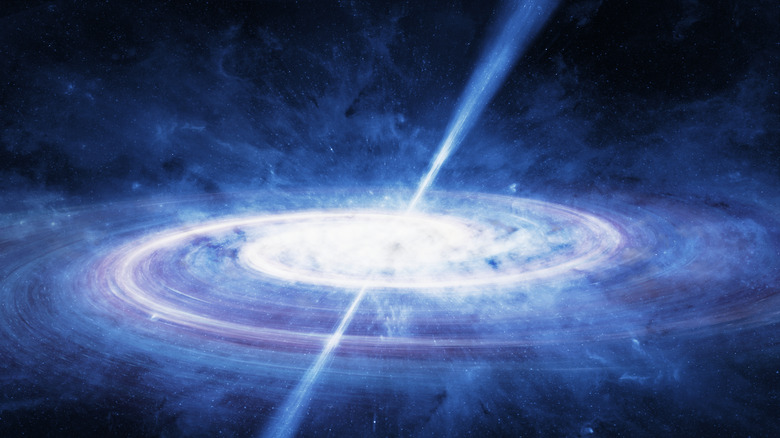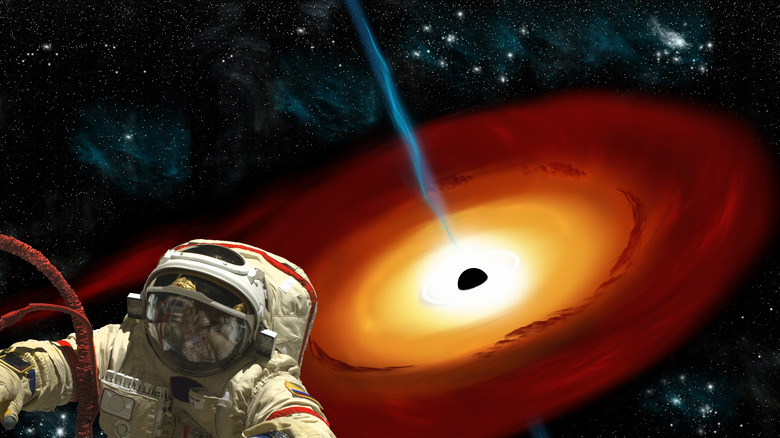Why Some Scientists Predict A Gamma-Ray Burst Could End The World
Doomsday scenarios that predict the end of life as we know it date back centuries. They include a range of apocalyptic catastrophes such as overpopulation leading to mass starvation, artificial intelligence gone awry, and a massive asteroid collision, to name a few. And then there's the gamma-ray burst. According to NASA, it's the most powerful and brightest explosion in the universe, occurring when giant stars collapse into black holes or when neutron stars collide mostly in distant galaxies. The burst sends directed beams of high-frequency electromagnetic radiation — or gamma rays — into space in opposite directions. From milliseconds to minutes, gamma-ray bursts emit as much energy as the sun during its 10-billion-year lifetime, according to Live Science.
We know this because astronomers have been studying this cosmic phenomenon since the 1960s, per NASA. But is there really a chance of planet-altering mass extinction from a gamma-ray burst? Maybe. In fact, some scientists believe it has happened on Earth before. Not recently, of course. A study published in the International Journal of Astrobiology suggests a gamma-ray burst 440 million years ago was partly responsible for the late Ordovician mass extinction that killed off 60% of marine invertebrates 200 million years before the dinosaurs (via NASA). Mass extinctions have occurred on the planet at least five times in the history of life, and scientists are now using fossil records to connect the timing of possible gamma-ray bursts to mass extinctions on Earth (via Space).
A gamma-ray burst could cause untold damage
If a gamma-ray burst directly hits the Earth, it could cause untold damage (via Live Science). While it would not penetrate the planet's atmosphere, it could chemically destroy it by depleting the ozone layer, a protective shield that keeps out the sun's ultraviolet rays. If the ozone layer was damaged or destroyed and allowed radiation to reach the Earth's surface, mass extinction could follow, and it would take at least five years to recover (via NASA).
"A gamma-ray burst originating within 6,000 light-years from Earth would have a devastating effect on life," said Dr. Adrian Melott of the Department of Physics and Astronomy at the University of Kansas (via NASA). "We don't know exactly when one came, but we're rather sure it did come — and left its mark. What's more surprising is that just a 10-second burst can cause years of devastating ozone damage."
The bottom line here is that gamma-ray bursts are not so unusual, Science reports. Observatories in space record one every day or two in faraway galaxies as massive stars collapse or collide and explode. In order to impact the Earth, though, a gamma-ray burst would have to directly hit the planet, and that is what most scientists believe is still an extremely rare phenomenon.

